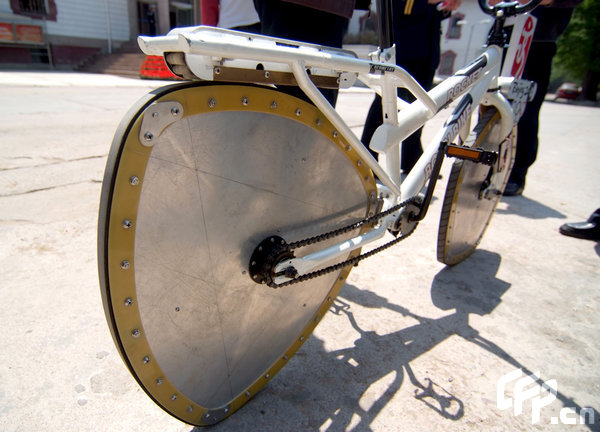From Wikipedia, a curve of constant width is a convex planar shape whose width, measured by the distance between two opposite parallel lines touching its boundary, is the same regardless of the direction of those two parallel lines. The shape we most associate with this is a circle, but there are other shapes that meet this criteria, such as the Reuleaux Triangle which is at the heart of Mazda's Wankel Engine, and some British coinage, where the constant shape allows machines to determine if the coinage is the proper denomination.
However, another interesting application is this bicycle, which, because of the constant geometric shape, rides as smoothly as a regular bicycle, although more effort is required:


As the Times from the UK describes, Chinese inventor Guan Baihua intend the bike for people who wish more of a work out on their bikes. The Times notes that the bicycle isn’t the first to exploit these shapes — they have been used as manholes since (unlike square covers) the constant size prevents covers from falling down the holes.
However, another interesting application is this bicycle, which, because of the constant geometric shape, rides as smoothly as a regular bicycle, although more effort is required:


As the Times from the UK describes, Chinese inventor Guan Baihua intend the bike for people who wish more of a work out on their bikes. The Times notes that the bicycle isn’t the first to exploit these shapes — they have been used as manholes since (unlike square covers) the constant size prevents covers from falling down the holes.


No comments:
Post a Comment